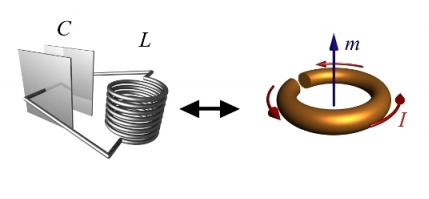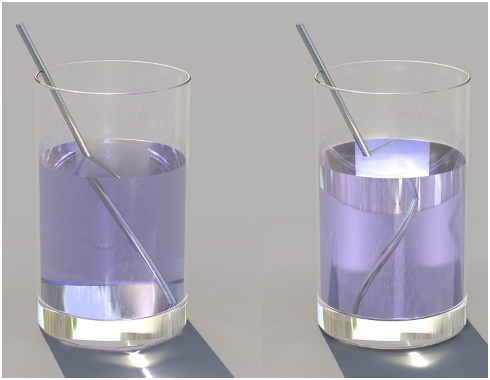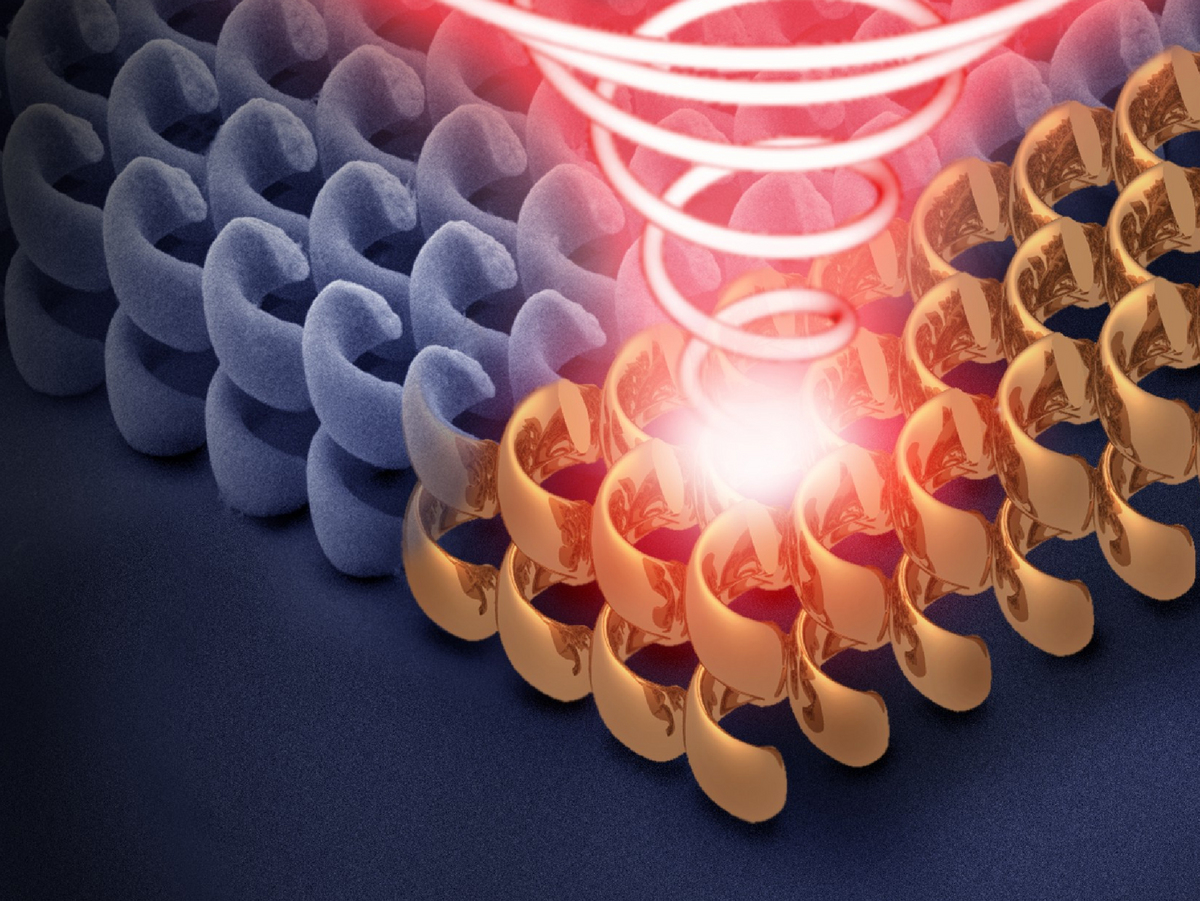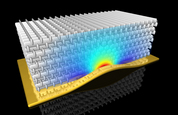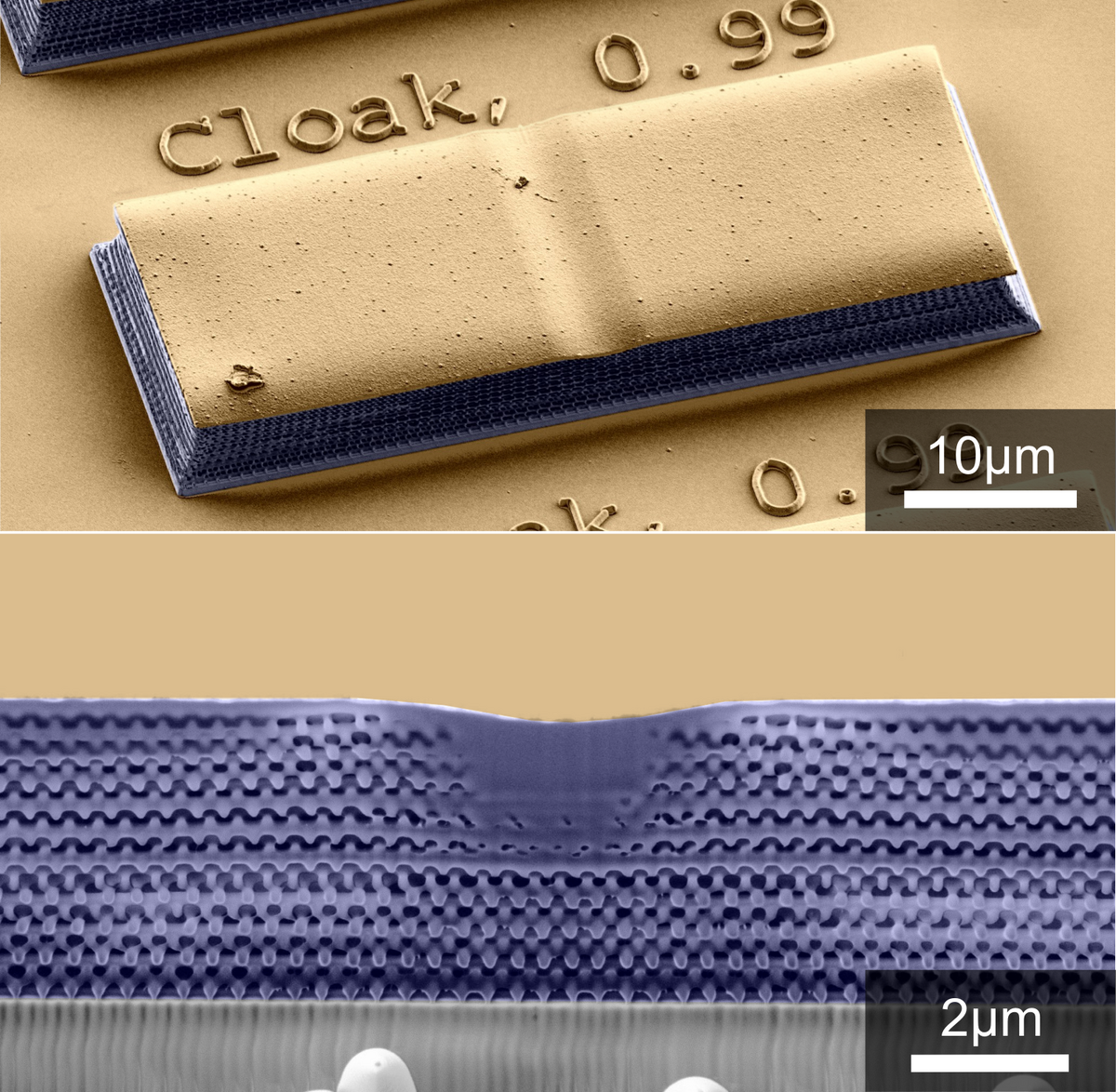Photonic Metamaterials
One half of optics was missing
At optical frequencies, electromagnetic waves interact with an ordinary optical material (e.g., glass) via the electronic polarizability of the material. In contrast, the corresponding magnetizability is negligible for frequencies above a few THz, or in other words, its magnetic permeability is identical to unity (μ(ω)=1). Consequently, the optical properties of an ordinary optical material are completely characterized by its electric permittivity ε(ω) (or dielectric function). As a result, we can only directly manipulate the electric component of light with an appropriate optical device while we have no immediate handle on the corresponding magnetic component. One half of optics has been missing.
Artificial magnetism at optical frequencies
Photonic metamaterials open up a way to overcome this constraint. The basic idea is to create an artificial crystal with significantly sub-wavelength periods. Analogous to an ordinary optical material, such a photonic metamaterial can approximately be treated as an effective medium characterized by effective material parameters ε(ω) and μ(ω). However, the proper design of the elementary building blocks (or "artificial atoms" or "meta-atoms") of the photonic metamaterial allows for a non-vanishing magnetic response and even for μ<0 at optical frequencies – despite the fact that the constituent materials of the photonic metamaterial are completely non-magnetic.
Negative refractive index …
Much of the early excitement in the field has been about achieving a negative index of refraction n<0 by simultaneous ε<0 and µ<0 at near-infrared or even at visible frequencies. A negative refractive index means that the phase velocity of light is opposite to the electromagnetic energy flow (the Poynting vector). This unusual situation has inspired fascinating ideas like the so-called "perfect lens", which employs the fact that the optical path length between two spatially separate points can be made equal to zero, rendering the two points equivalent for the purpose of optics.
… and beyond
Artificial magnetism is also a necessary prerequisite for obtaining strong optical activity and circular dichroism. These phenomena are based on magnetic dipoles excited by the electric component of the light field and vice versa. Three-dimensional metal helices have been a corresponding paradigm building block in optical textbooks, but their nanofabrication has not been possible until quite recently. Such gold-helix metamaterials can be applied as compact and broadband (more than one octave) circular polarizers - the circular analogue of the good old wire-grid linear polarizer (already used by Heinrich Hertz in his pioneering experiments on electromagnetic waves in Karlsruhe in 1887) and possibly a first down-to-earth application of the deceptively simple but far-reaching ideas of photonic metamaterials.
Transforming optical space
Further flexibility for achieving certain functions arises from intentionally spatially inhomogeneous optical metamaterials. Such structures can be designed using the concepts of transformation optics, which is inspired by Albert Einstein’s theory of General Relativity. In essence, distortions of actual space (e.g., due to heavy masses) can equivalently be mimicked by distortions of optical space, i.e., by tailoring the local index of refraction. Invisibility cloaking structures have been a demanding benchmark example for the strength of transformation optics because invisibility cloaks would have been considered "impossible" just five years ago. Today, direct laser writing has allowed for the first three-dimensional invisibility cloaking structures. Lately, even visible operation frequencies have become accessible.
A complete list of publications can be found here.

